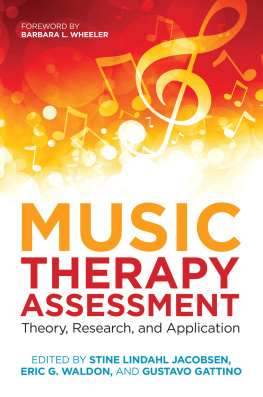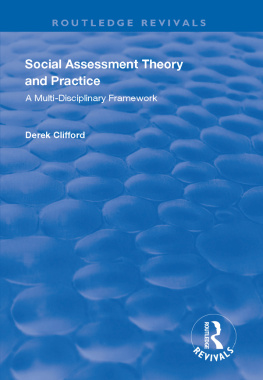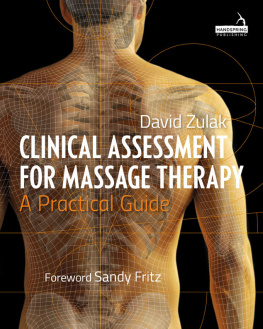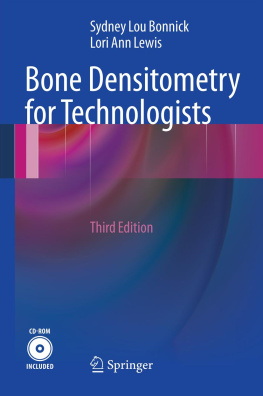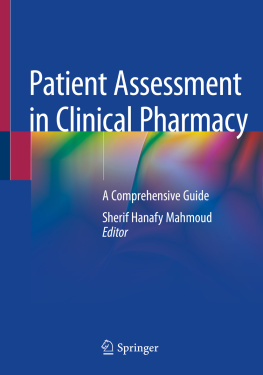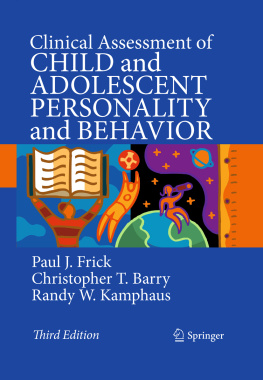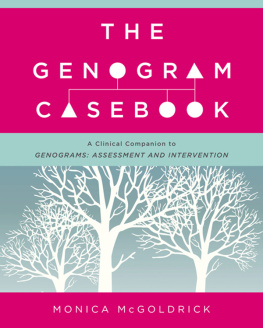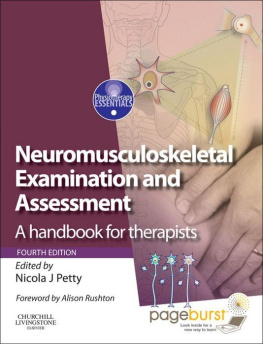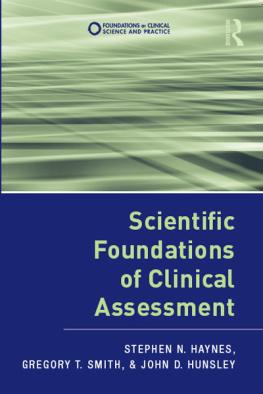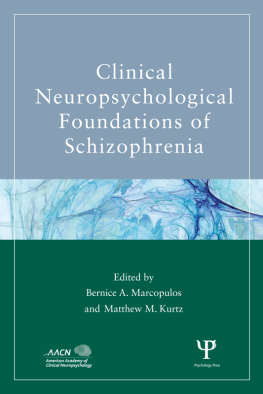
Music Therapy
Assessment
Theory, Research, and Application
Edited by Stine Lindahl Jacobsen,
Eric G. Waldon, and Gustavo Gattino
Foreword by Barbara L. Wheeler

Contents
Foreword
Barbara L. Wheeler
Assessment is essential to music therapy treatment, but music therapists understanding of assessment and methods of assessing have not always kept up with their clinical needs. While many clinical techniques have advanced over the years, it has taken longer for the assessment process to progress. This is changing, and this book can play an important role in helping to move music therapy assessment forward. In addition to presenting a variety of perspectives, the book includes important psychometric information that can inform music therapy assessment.
In the first chapter, the editors state, The purpose of this text is to assist the reader in making effective assessment decisions which involve: reviewing pertinent records, documents, and clinical artifacts; employing effective interviewing skills and methods; carrying out appropriate observational strategies; and selecting, administering, and interpreting findings from clinically relevant tests and measures. This book will assist music therapists with all of these.
The grounding in psychometric concepts that the book provides can be valuable as music therapists continue to develop assessment tools for various needs and clientele. In to clinical assessment in music therapy. Developing assessment tools with acceptable psychometric properties is crucial as music therapists move forward in this area, and the integration of these concepts with the material in the book will be invaluable in this process. The data-based decision-making model that is introduced helps put different aspects of the assessment process into a context, with reviewing, interviewing, observing, and testing serving certain functions across all phases of the treatment process (from referral through termination). The emphasis on assessment tools (and specifically these tests and scales that yield scores) in the book draws attention to this area of clinical practicethat is, the development of standardized tools (in which the tools/items have been developed in a systematic way, the tool is administered in a standardized way, and the results are interpreted/used in a standardized way).
The discussion of Music Therapy Assessment Without Tools: From the Clinicians Perspective, found in , gives an overview of 29 non-test tools that are available for music therapy assessment. The authors of this chapter say that they aim to focus on non-test tools in music therapy, including a literature review, types of observation, and conduct a guide on how to do assessment without a pre-developed tool. The guide aims to help clinicians by suggesting what to be aware of before, during, and after collecting, analyzing, interpreting, and disseminating assessment data. This makes it clear that music therapists have numerous tools for assessment in addition to the relatively formal and developed tools that are the primary focus of the book.
Following this chapter and a brief introductory chapter on what follows, the presentation of a number of music therapy assessment instruments will be helpful to music therapists who wish to use and adapt them. Most of these summaries are written by those who developed the tools, and having them together in one extensive collection is a first and should be useful to music therapists. This part of the book includes 16 assessment tools. They come from the US, South America, and northern Europe, with authorship from the following countries: US (6), Germany (4), Denmark (3), the UK (2), Argentina (1), Faroe Islands (1), and Finland (1) (two are attributed to more than one country, thus the total is higher than 16). Not all of the tools are population-specific, but, generally, the populations covered include autism and autism spectrum disorder; communication disorders; children, adolescents, and adults with psychiatric disorders; acquired brain injury; older adults, including those with dementia; children and parents with no specific diagnoses; and people with a variety of diagnoses.
The assessment tools are varied, although almost all include some type of psychometric evidence, primarily calculating and reporting information on reliability and validity. The advances in psychometric development are both necessary and impressive, as evidenced in overviews of assessment tools over the past 20 or so years. Referring to assessment tools in music therapy, Gfeller and Davis said, in 2008, The drawback for some of these tests is that reliability and validity have not yet been fully established. In such cases, caution must be used when interpreting the results (p. 437). Two extensive surveys of music therapy assessment tools, both published in 2000 (Gregory 2000; Wilson and Smith 2000), did not include psychometric information, although Wilson and Smith did refer to weaknesses in the assessment tools due to the lack of information on reliability and validity. This in itself seems significant in that, at that time, psychometric properties were not a focus of these inquiries. In 2005, Meadows and his colleagues said, A second issue concerns the reliability and validity of music therapy assessments. This issue has not been adequately addressed in music therapy assessment, even though it has been raised previously (Bruscia, 1988) (p. 45).
Movement towards recognizing the importance of psychometric properties of assessment tools does seem to have occurred in the second decade of this century. Most reviews of assessment tools now refer to the psychometric properties of the tools. In 2013, Wheeler referred to reliability, validity, and other aspects of assessments that she reviewed, while Lipe (2015) summarized 20 assessment tools on a chart. She evaluated 13 of these as including no psychometric information, while six did report it (an additional tool stated that it had this information but did not include the numbers describing it). Waldon and his colleagues (Waldon 2014; Waldon, Monje, and Powell 2014) looked at the psychometric properties of 25 music therapy assessment tools that were published from 1981 to 2014. They found that 17 included information on both reliability and validity, three on reliability only, one on validity only, and four had none.
It is not possible to compare all of these overviews of music therapy assessment tools directly, as they used different criteria for inclusion and focused on different areas. This overview, though, does suggest that increasing emphasis is being placed on the psychometric properties of music therapy assessment toolsan important step in this area. And it brings us to this book, which makes an important contribution to music therapy assessment, including the psychometric properties of the assessment tools that are included.
This book will help music therapists move towards more effective assessment. This movement will in turn move the discipline of music therapy in a positive direction, both in the assessment of clients and in credibility with other disciplines.
References
Gfeller, K. E. and Davis, W. B. (2008) The Music Therapy Treatment Process. In W. B. Davies, K. E. Gfeller, and M. H. Thaut (eds) An Introduction to Music Therapy: Theory and Practice . Silver Spring, MD: American Music Therapy Association.
Gregory, D. (2000) Test instruments used by Journal of Music Therapy authors from 19841997. Journal of Music Therapy, 37, 2, 7994.
Lipe, A. W. (2015) Music Therapy Assessment. In B. L. Wheeler (ed.) Music Therapy Handbook. New York, NY: Guilford Press.
Next page
